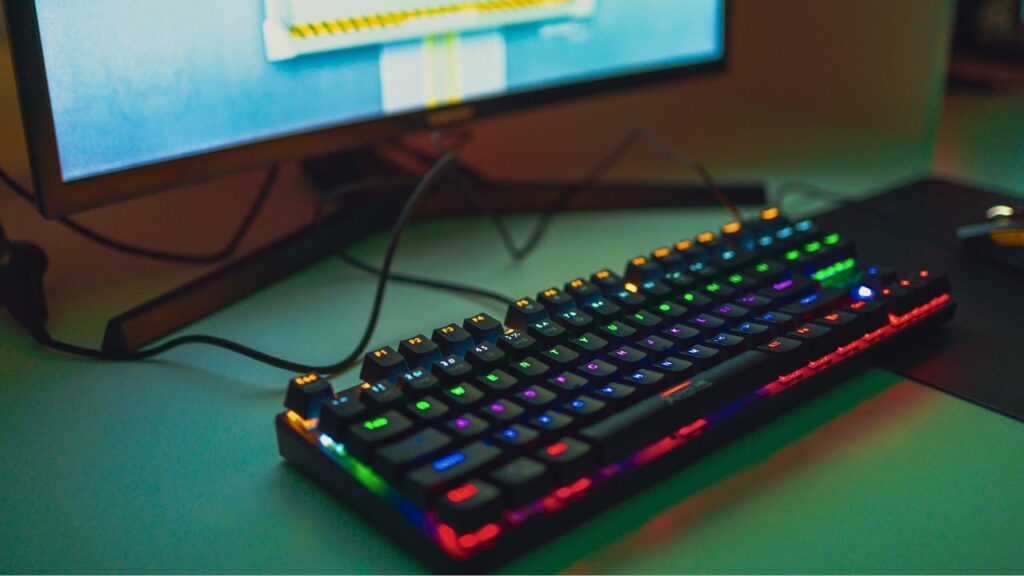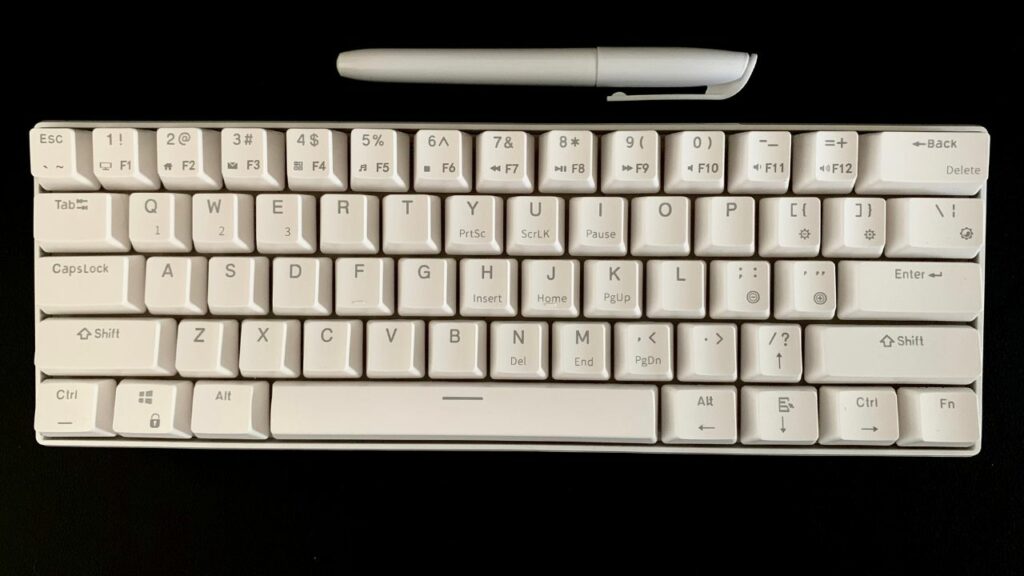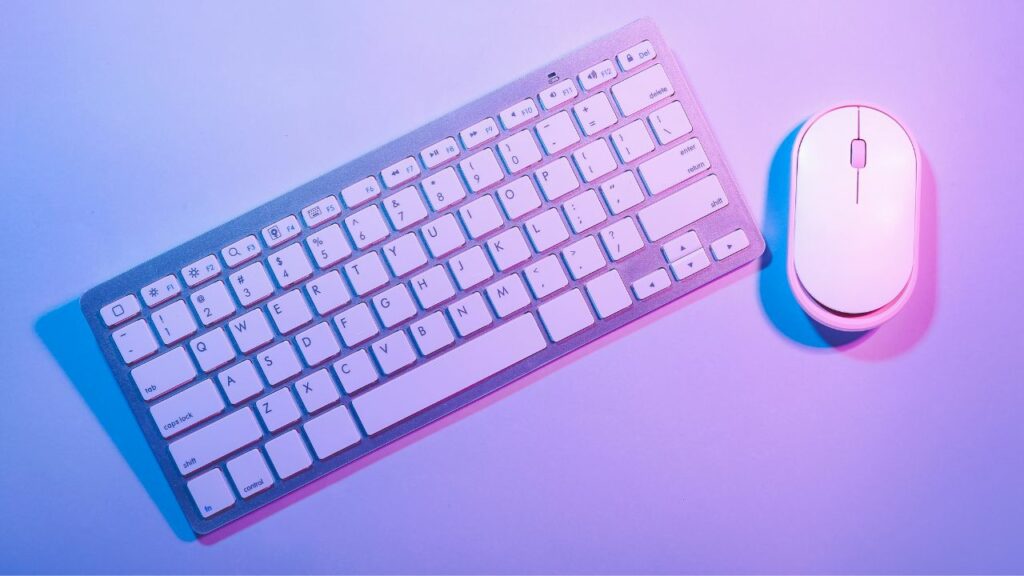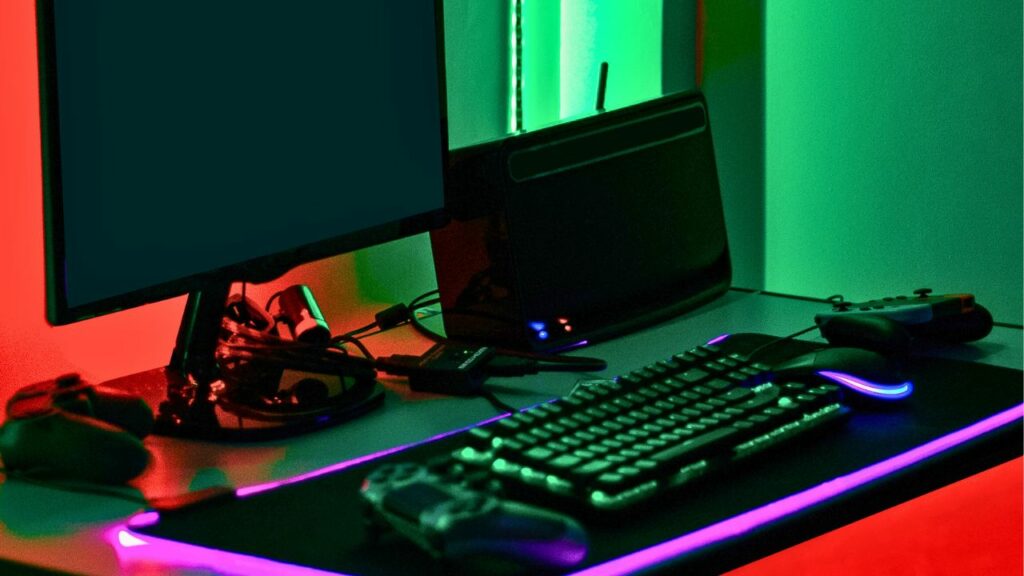Keyboard enthusiasts, gamers, and professionals encounter a myriad of options when it’s about selecting the ideal keyboard. The contest between Tenkeyless (TKL) and 60% keyboards can be formidable, with each bringing its unique attributes and strengths to the table. In this comprehensive guide, we’ll dissect the crucial differences between TKL and 60% keyboards, steering you towards the one that aligns with your requirements.
Understanding TKL (Tenkeyless) Keyboards

Definition and Key Features of TKL Keyboards
In essence, a TKL keyboard is a keyboard sans the number pad, a regular feature on full-size keyboards. This design choice renders the TKL keyboard more compact than a standard full-size counterpart while preserving most keys vital for day-to-day use.
Pros and Cons of Using TKL Keyboards
TKL keyboards boast versatility, rendering them an apt choice for regular, non-mathematical computer tasks. They excel at functions like work-related tasks, browsing, or generic functions. As TKL keyboards eliminate the number pad, they occupy less desk space, advantageous for those operating with confined workspaces.
However, the absence of a number pad might inconvenience those frequently dealing with numbers, such as accountants or data analysts.
Common Use Cases for TKL Keyboards
TKL keyboards are ideal for users who prioritize space-saving and don’t require a dedicated number pad. Professionals and general users can benefit from a TKL keyboard, as it offers a more compact form factor without sacrificing the essential keys needed for everyday computing tasks.
Exploring 60% Keyboards

Definition and Key Features of 60% Keyboards
A 60% keyboard is even more compact than a TKL keyboard, eliminating the function row, arrow keys, and navigational keys. This makes the 60% keyboard a popular choice among gamers who value portability and aesthetics.
Pros and Cons of Using 60% Keyboards
The 60% keyboard is preferred by gamers due to its ability to switch between different key layers that allow access to shortcuts. The compact size and aesthetic appeal make it a popular choice for gaming setups.
The average user, on the other hand, may find switching to a 60% model awkward because of the lack of some common keys. Additionally, 60% keyboards can still limit mouse movement and strain hands due to awkwardly-positioned keys.
Common Use Cases for 60% Keyboards
60% keyboards are best suited for gaming purposes, where the compact size and key layer functionality can enhance the gaming experience. These keyboards are not ideal for users who rely heavily on function keys, arrow keys, and navigational keys for their daily computing tasks.
Key Layer Functionality and Shortcuts
The ability to switch between different key layers on a 60% keyboard allows gamers to access shortcuts and custom key bindings without the need for additional keys. This feature provides a more streamlined gaming experience, as users can quickly execute commands and actions using fewer keys.
Overcoming Challenges with 60% Keyboards
Addressing the Awkwardness of Transitioning to a 60% Keyboard
For users who are new to 60% keyboards, the transition can be challenging due to the lack of certain keys. One solution is to practice using the keyboard and gradually become accustomed to its unique layout. Familiarity with key layers and shortcuts can also help users adapt more easily to a 60% keyboard.
Alternative Options: 65% or 68% Keyboards
If you find the 60% keyboard too restrictive, you might want to consider 65% or 68% keyboards. These options have a similar footprint to 60% keyboards but often include arrow keys, providing a more comfortable user experience while maintaining a compact design. To learn more about different keyboard sizes, check out this keyboard size guide.
Considering 5 Key PCBs for Customization
For those who want even more customization options, 5 key PCBs are an interesting alternative. These small boards allow users to add extra keys to their keyboard, providing additional functionality and personalization to suit their preferences.
The Cherry 1800 and 1800-Compact Keyboards: A Middle Ground

Description of Cherry 1800 and 1800-Compact Keyboards
Cherry 1800 and 1800-Compact keyboards offer a unique solution for users who want a compact keyboard without sacrificing functionality. These keyboards feature dedicated arrow clusters and numpads within the space of a TKL keyboard, making them an excellent choice for users who need these specific features without the bulk of a full-size keyboard.
Benefits of Dedicated Arrow Clusters and Numpads in a TKL-sized Keyboard
The inclusion of dedicated arrow clusters and numpads in a TKL-sized keyboard provides the best of both worlds for users who require the functionality of a full-size keyboard but prefer a more compact form factor. This middle ground can be particularly appealing to professionals who frequently work with numbers and navigation keys.
Building a Custom TKL Keyboard

Benefits of Building a Custom TKL Keyboard
Creating a custom TKL keyboard empowers users to fine-tune their keyboard to their distinct needs and preferences. By handpicking appropriate components, like switches, keycaps, and case materials, users can craft a keyboard that brings together the perfect harmony of functionality, aesthetics, and typing experience.
Necessary Components for a Custom Build
To build a custom TKL keyboard, you will need the following components:
- Case
- Switches
- Switch plate
- Teensy 2.0++ (or other compatible controller)
- Teflon wire
- Keycaps
Tips for Sourcing Secondhand Components
Building a custom TKL keyboard can turn more budget-friendly by procuring secondhand components. Online forums, social media groups, and local classified ads serve as excellent sources to locate used cases, switches, switch plates, and keycaps at a fraction of new components’ cost. Always ensure to verify the quality and condition of the components before purchasing to guarantee a successful build.
Conclusion
When choosing between TKL and 60% keyboards, it’s crucial to consider your specific needs and preferences. TKL keyboards are a versatile option for professionals and general users, while 60% keyboards cater more to gamers and those who value aesthetics and portability.
Alternative options such as 65% or 68% keyboards and Cherry 1800/1800-Compact keyboards offer additional choices for users who need a balance between compact size and functionality. Building a custom TKL keyboard provides even more personalization and the opportunity to create a keyboard that truly suits your needs.
To explore more about different keyboard sizes and the best 40% keyboards, check out the following articles:
Armed with this knowledge, you’re now equipped to make an informed decision and choose the perfect keyboard, whether for gaming or professional use.